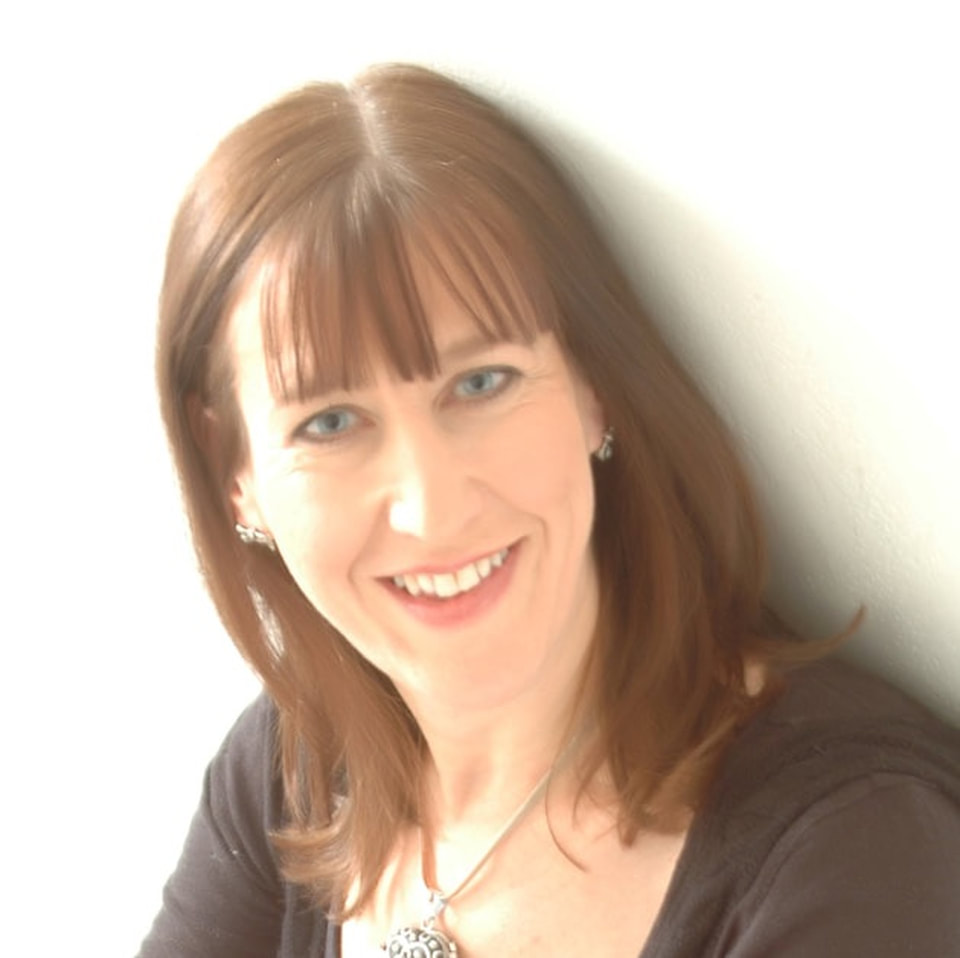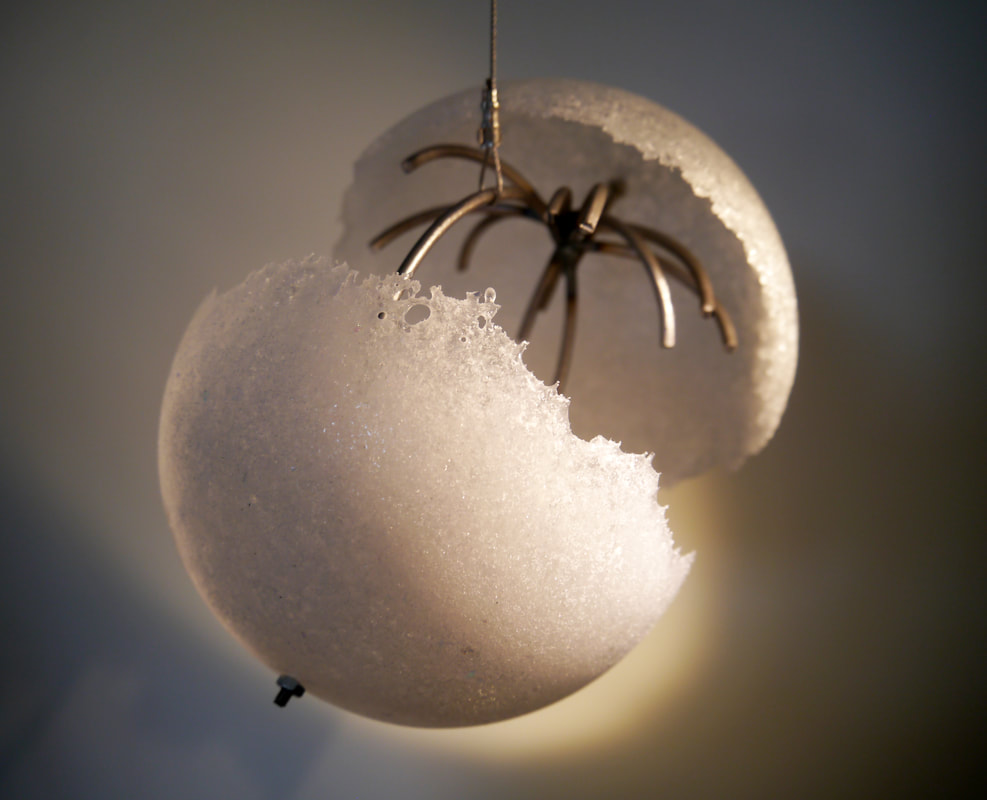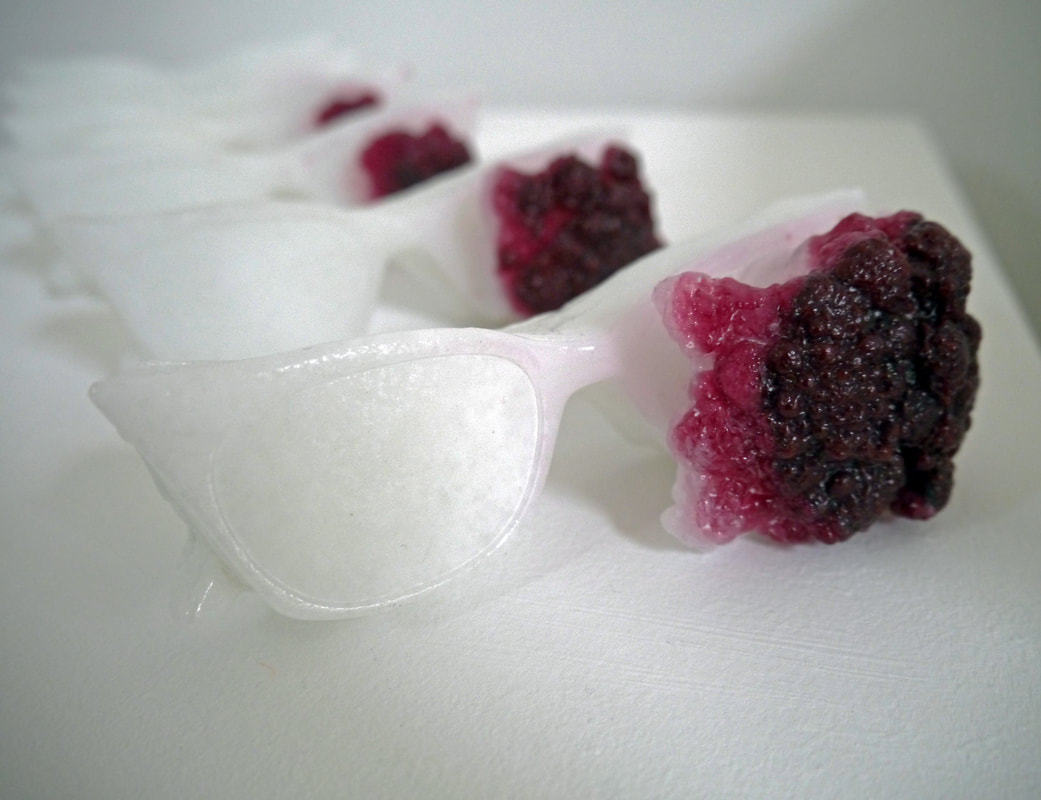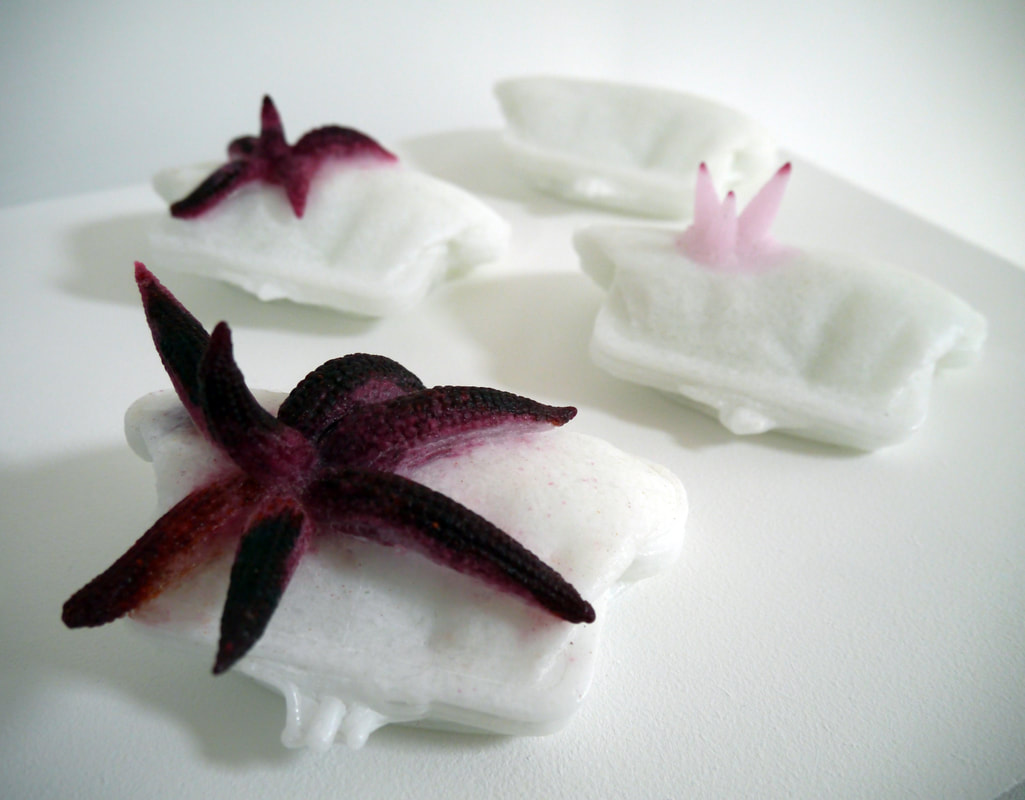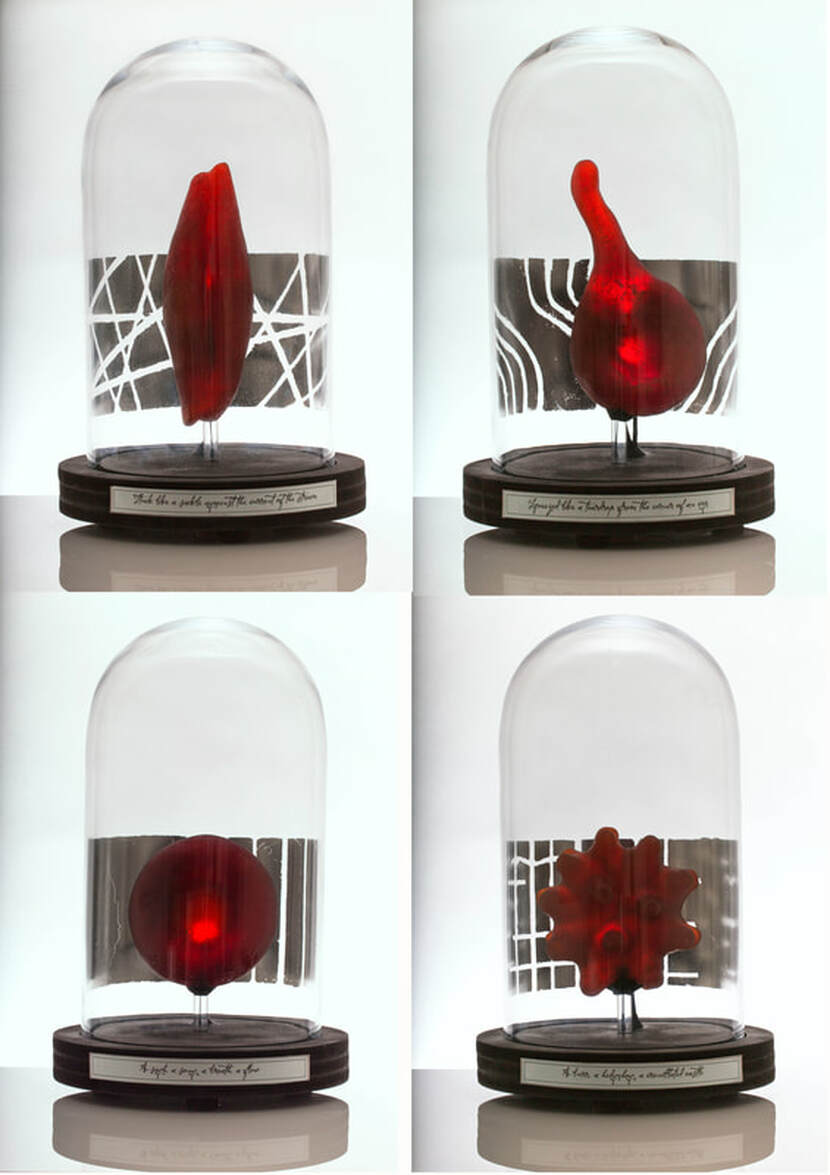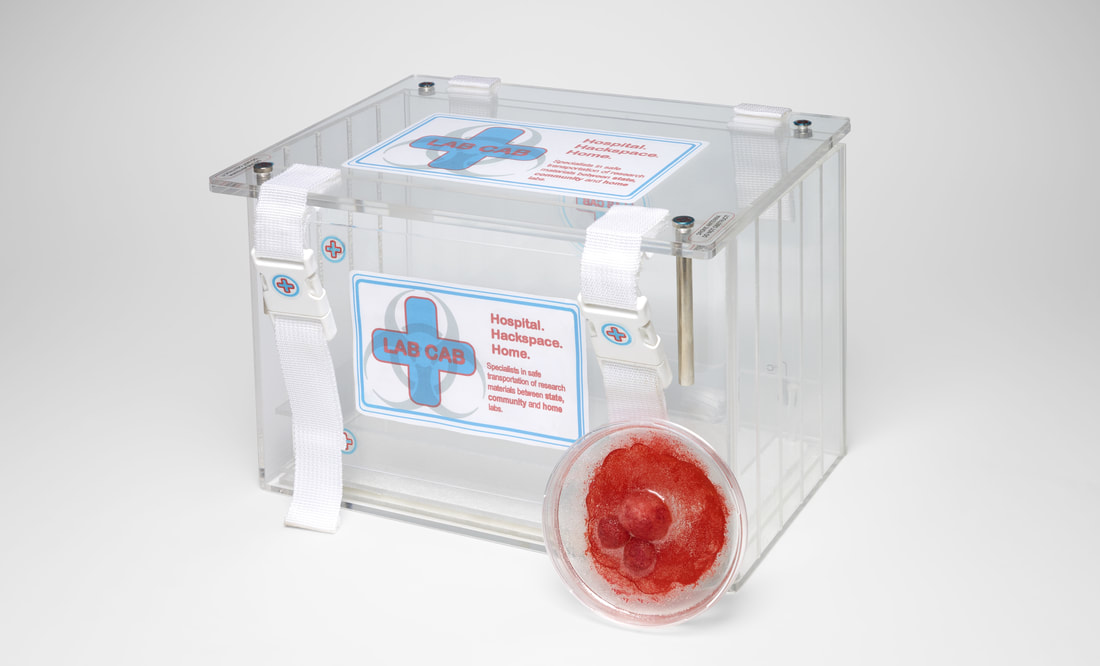Julie Light
Interview by Kate Schwarting, Programs Manager
Interview by Kate Schwarting, Programs Manager
KS: How does science and research influence your work?
JL: My father was a medical physicist instrumental in developing ways to measure blood flow using ultrasound, and as a child - and occasional guinea pig - for the new equipment, I found his work and lab inspiring. I came to expect to find bits of experimental technology around the house alongside the more traditional domestic paraphernalia, so when I started making art, science as part of everyday life was a natural theme for me. A particular fascination of mine has been to explore how medical imaging technologies shape the way we think about our bodies from the inside out, and how we imagine ourselves at a microscopic level. I have recently been researching editorial processes that influence how images of cells transition from scientific sources into the media. My current work about cells and mutations responds to considerations about how the types of cell images we see around us might inform our sense of embodiment and identity. More generally, I am interested in the ways that scientists research, and have recently completed a project with The Royal Society for which I curated a museum of the future, The Museum of Extraordinary Objects. Each object in the Museum was made by different artists to signal a critical moment in the development of future science research culture. The objects were used to consult with scientists across the UK about how research culture should develop, and it has been wonderful seeing the artwork playing such an active role in shaping science research thinking. (You can find out more about the Museum at royalsociety.org).
JL: My father was a medical physicist instrumental in developing ways to measure blood flow using ultrasound, and as a child - and occasional guinea pig - for the new equipment, I found his work and lab inspiring. I came to expect to find bits of experimental technology around the house alongside the more traditional domestic paraphernalia, so when I started making art, science as part of everyday life was a natural theme for me. A particular fascination of mine has been to explore how medical imaging technologies shape the way we think about our bodies from the inside out, and how we imagine ourselves at a microscopic level. I have recently been researching editorial processes that influence how images of cells transition from scientific sources into the media. My current work about cells and mutations responds to considerations about how the types of cell images we see around us might inform our sense of embodiment and identity. More generally, I am interested in the ways that scientists research, and have recently completed a project with The Royal Society for which I curated a museum of the future, The Museum of Extraordinary Objects. Each object in the Museum was made by different artists to signal a critical moment in the development of future science research culture. The objects were used to consult with scientists across the UK about how research culture should develop, and it has been wonderful seeing the artwork playing such an active role in shaping science research thinking. (You can find out more about the Museum at royalsociety.org).
KS: What is the importance of glass in your work?
JL: It was learning to cast glass that made me into an artist. Although I work with other materials, glass is my first love! I am often thinking as much about what you see inside or through the piece as I am about its exterior. I love that you can make such a fragile, brittle material appear soft and malleable through the casting and finishing processes. Glass is excellent at picking up texture, which is central to my work, and it’s very versatile in that you can produce finishes that range from opaque and matt to clear and shiny. There’s also a special satisfaction in learning the techniques for casting glass, as heating and cooling glass successfully in a kiln is a science in itself.
JL: It was learning to cast glass that made me into an artist. Although I work with other materials, glass is my first love! I am often thinking as much about what you see inside or through the piece as I am about its exterior. I love that you can make such a fragile, brittle material appear soft and malleable through the casting and finishing processes. Glass is excellent at picking up texture, which is central to my work, and it’s very versatile in that you can produce finishes that range from opaque and matt to clear and shiny. There’s also a special satisfaction in learning the techniques for casting glass, as heating and cooling glass successfully in a kiln is a science in itself.
KS: What experiences have shaped you as an artist?
JL: It’s probably my own medical history that has shaped me most as an artist. I had thyroid cancer at quite an early age, the diagnosis of which was initially missed, and also a later mix-up of medical identity that affected my treatment for another condition. It’s no wonder that I am fascinated with medical imaging and identity.
JL: It’s probably my own medical history that has shaped me most as an artist. I had thyroid cancer at quite an early age, the diagnosis of which was initially missed, and also a later mix-up of medical identity that affected my treatment for another condition. It’s no wonder that I am fascinated with medical imaging and identity.
KS: Do you have any upcoming projects or exhibitions you are working on?
JL: I have been studying for an MA in Art and Science over the last two years and our degree show, Fields, will be taking place at Central St Martins in London this month. I am also delighted to have a piece to be shown over the coming months at Infinite Potentials, a SciArt Center exhibition at ArtCell (Cambridge, U.K.) and New York Hall of Science (New York City), in collaboration with the Cambridge Stem Cell Institute. Aside from that, I will be spending lots of time in my studio getting going on a couple of new, very embryonic ideas that have recently emerged.
JL: I have been studying for an MA in Art and Science over the last two years and our degree show, Fields, will be taking place at Central St Martins in London this month. I am also delighted to have a piece to be shown over the coming months at Infinite Potentials, a SciArt Center exhibition at ArtCell (Cambridge, U.K.) and New York Hall of Science (New York City), in collaboration with the Cambridge Stem Cell Institute. Aside from that, I will be spending lots of time in my studio getting going on a couple of new, very embryonic ideas that have recently emerged.

